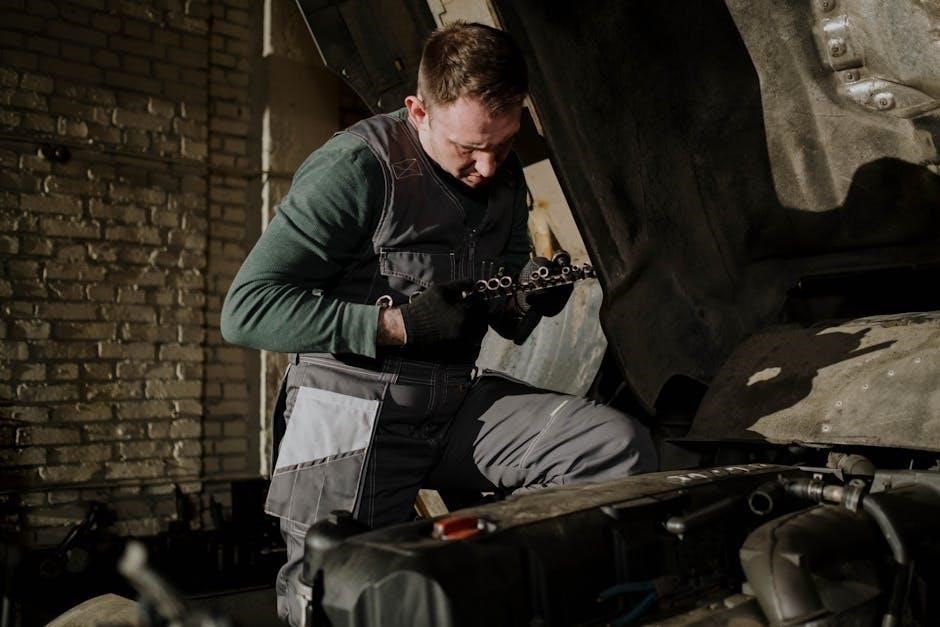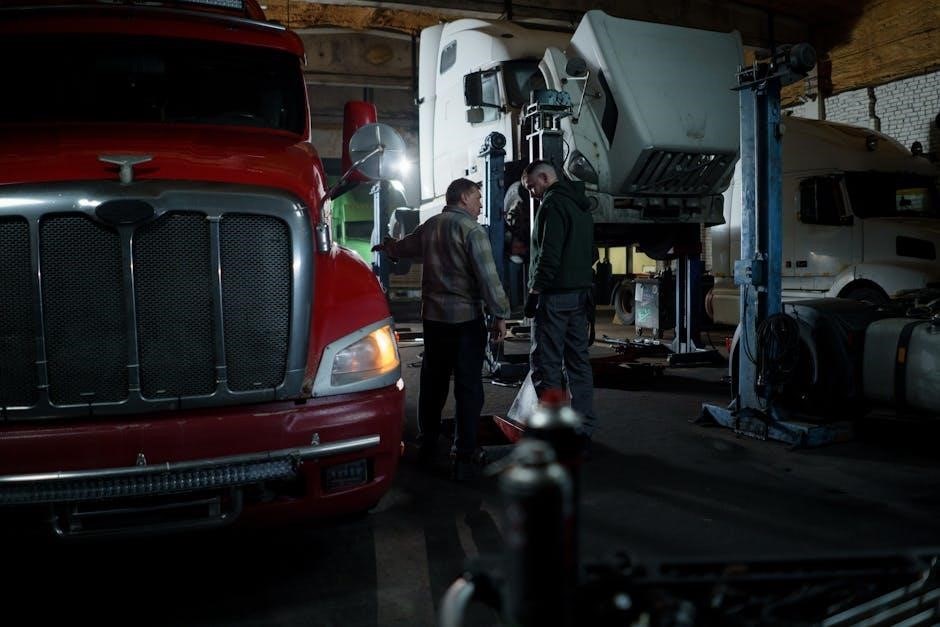Fire Truck Inspection Checklist: A Comprehensive Guide
Behind every successful firefighting operation lies meticulous maintenance and rigorous inspection. This comprehensive guide explores the crucial world of fire truck inspection checklists, their structure, vital components, and their impact on firefighter safety.
Purpose of a Fire Truck Inspection Checklist
The primary purpose of a fire truck inspection checklist is to meticulously ensure that all critical equipment and systems on a fire truck are in proper working order, guaranteeing readiness for emergency response situations. It plays a vital role in confirming that essential safety features, including lights, sirens, brakes, hoses, and ladders, function as intended, maximizing the safety of firefighters and the public.
The checklist also serves as a proactive tool to identify any maintenance or repair issues that require attention before the fire truck can be deemed safe and fully operational. Regular inspections, guided by the checklist, are crucial for maintaining the overall reliability and readiness of fire trucks, ensuring efficient and effective emergency response capabilities. Ultimately, the checklist is an indispensable component of a comprehensive fire safety program, contributing to the well-being of both firefighters and the communities they serve. This contributes to a more efficient firefighting operation.
Key Components of a Fire Truck Inspection
A thorough fire truck inspection encompasses several key components to ensure comprehensive assessment. The exterior inspection involves scrutinizing the body and chassis for rust, dents, scratches, and any structural damage, ensuring the truck’s integrity. Interior and compartment inspection focuses on verifying the presence and condition of all equipment, ensuring that items are readily accessible and in good working order.
Essential systems and equipment checks cover the engine and mechanical systems, evaluating fluid levels, hoses, and overall performance. Safety features like lights, sirens, and brakes are rigorously tested to guarantee proper functionality. Finally, firefighting equipment, including hoses, ladders, and extinguishers, undergoes careful inspection to confirm readiness for immediate use. These components combined deliver a safe truck. Addressing any identified issues promptly is crucial for maintaining optimal operational readiness and firefighter safety. All steps are designed for firefighter safety.
Exterior Inspection: Body and Chassis
The exterior inspection of a fire truck’s body and chassis is a critical step in ensuring its structural integrity and overall safety. Begin by thoroughly examining the body for any signs of rust, dents, or scratches, as these could indicate underlying damage or corrosion. Pay close attention to the frame, checking for cracks or deformities that might compromise the vehicle’s stability.
Inspect all doors, compartments, and latches to ensure they are functioning correctly and securely. Verify that all external lights, including headlights, taillights, and emergency lights, are operational and free from damage. Check the condition of the tires, ensuring they have adequate tread depth and proper inflation. Also, be sure to check the fuel tank. Addressing any issues promptly is essential for maintaining the fire truck’s reliability and effectiveness in emergency situations.

Interior and Compartment Inspection
The interior and compartment inspection is a vital aspect of a fire truck checklist, ensuring that the vehicle is organized and safe. Begin by inspecting the driver’s area, checking the condition of seats, seatbelts, and mirrors. Ensure all gauges and controls are functioning correctly.
Proceed to inspect each compartment, verifying that all equipment is present, properly stored, and in good working condition. Check that all tools, medical supplies, and firefighting gear are readily accessible and secured. Ensure that compartment doors and latches are functioning correctly, preventing equipment from shifting during transit.
Additionally, inspect the interior lighting to ensure adequate visibility. Take note of any missing, damaged, or malfunctioning items, reporting them for repair or replacement. A well-maintained interior and organized compartments are crucial for efficient operations.

Essential Systems and Equipment Checks
Essential systems and equipment checks are paramount for fire truck readiness. These checks encompass critical components that must function flawlessly during emergencies. Engine and mechanical systems undergo thorough inspection, ensuring optimal performance. Safety features, including lights, sirens, and brakes, are meticulously tested for immediate response capability.
Firefighting equipment, such as hoses, ladders, and extinguishers, are examined for proper functionality and accessibility. The engine oil level, condition, and potential contamination are carefully assessed. Fluid leaks are checked under the vehicle, along with steering shafts and linkages.
Wheels, lug nuts, and tires are inspected for condition and pressure. All gauges and controls in the cab are verified for accurate readings and operation. These comprehensive checks guarantee the reliability and effectiveness of the fire truck.
Engine and Mechanical Systems

A meticulous inspection of the engine and mechanical systems is crucial for ensuring a fire truck’s operational readiness. This process begins with checking the engine oil level, ensuring it is at the “full” mark on the dipstick, and adding oil if necessary. The oil’s condition is also assessed, looking for any abnormal discoloration or odors that may indicate contamination, such as gas or diesel fuel.
Additionally, the inspection includes examining the steering shafts and linkages for any signs of wear, damage, or leaks. Regular checks of these systems are vital for maintaining the vehicle’s overall performance and preventing potential mechanical failures during emergency situations. Proper maintenance ensures the engine operates efficiently and reliably.
Safety Features: Lights, Sirens, and Brakes
Ensuring the functionality of safety features is paramount for the safe operation of a fire truck. This includes a thorough check of all lights, ensuring they are operational and visible. Sirens must also be tested to guarantee they are audible and function correctly, providing adequate warning during emergency responses.
Furthermore, the braking system requires careful attention, verifying that it is responsive and effective. Regular inspection of brake components, such as pads and rotors, is essential for maintaining optimal braking performance. A properly functioning braking system is critical for preventing accidents and ensuring the safety of the crew and the public. Addressing any issues promptly is vital.
Firefighting Equipment: Hoses, Ladders, and Extinguishers
Firefighting equipment is the backbone of any fire truck, and its readiness is critical. Hoses should be inspected for any signs of wear, damage, or leaks. Couplings must be tightly secured and free of corrosion. Ladders should be checked for structural integrity, ensuring they are stable and safe for use.
Fire extinguishers must be readily accessible, fully charged, and properly maintained. Inspection should confirm that the pressure gauges are within the recommended range and that the extinguishers have current inspection tags. Proper storage and securing of all equipment are essential to prevent damage and ensure quick deployment during emergencies.
Frequency of Inspections
Regular inspections are paramount to maintaining the readiness of fire trucks. A tiered approach to inspection frequency is often adopted, encompassing daily, weekly, monthly, and annual checks. Daily inspections should focus on essential functions and readily visible components to identify immediate issues.
Weekly inspections can delve deeper, examining fluid levels and basic system operations. Monthly inspections provide a more comprehensive review of all critical systems and equipment. Annual inspections should involve thorough testing and maintenance by qualified technicians, ensuring long-term reliability and compliance with safety standards. Consistent adherence to these inspection schedules is crucial for preventing equipment failures.
Individuals Responsible for Inspections
The responsibility for conducting fire truck inspections typically falls upon several key individuals within a fire department. Firefighters themselves play a crucial role, often performing daily and weekly checks as part of their routine duties. These inspections ensure that the apparatus is ready for immediate response and any issues are promptly identified.
Additionally, designated maintenance personnel, such as mechanics and technicians, are responsible for conducting more in-depth monthly and annual inspections. These professionals possess the expertise to assess complex systems, perform necessary repairs, and ensure compliance with regulatory standards. Effective collaboration between firefighters and maintenance staff is essential for a successful inspection program.
Benefits of Regular Inspections
Regular inspections offer a multitude of benefits, significantly enhancing the safety and effectiveness of fire departments. Proactive maintenance identifies and addresses minor issues before they escalate into major repairs, reducing downtime and saving costs. Well-maintained fire trucks ensure a higher level of operational readiness, allowing firefighters to respond swiftly and effectively to emergencies.
Inspections contribute to a safer working environment for firefighters by verifying the functionality of critical safety equipment, such as brakes, lights, and sirens. Compliance with industry standards and regulations reduces the risk of accidents and liability. Moreover, regular inspections extend the lifespan of fire trucks, maximizing the return on investment and ensuring long-term reliability.


